Best Small SUV: The 11 SUV Mega Comparison

Co-written with Mike Schlee, Lee Bailie, and Kunal D'souza
Just like the families that made them popular, “compact” SUVs have grown up.
They’ve grown up so much in fact, that the likes of the Toyota RAV4, Honda CR-V, and Subaru Forester are now all de facto replacements for the mid-sized sedans of yore. The growth spurt has left a vacuum in the class below, as brands scrambled to fill the small SUV segment. Subaru was arguably first with the wickedly successful Crosstrek, but here in 2024, just about every brand has a competitor.
And like the Nick Fury of the small SUV scene, we’ve assembled them all. Well, basically: this massive 11-SUV group is missing the Jeep Compass and soon-to-be-released Nissan Kicks. Everyone else is here, from the aforementioned Subaru Crosstrek, the futuristic Hyundai Kona, and fuel-sipping Toyota Corolla Cross Hybrid. We even have an affordable front-drive interloper amongst the ranks in the form of the Chevrolet Trax.
To handle this all-out slug-fest, managing editor Mike Schlee and I enlisted contributors Lee Bailie and Kunal D’Souza. We spent a week driving and scoring these vehicles—and this time, we’re ranking them all, from 11th right up to the winner. So begins our 11 Small SUV Mega Comparison, brought to you by Weathertech.
11th Place: Mitsubishi Eclipse Cross
Written by Mike Schlee
The Mitsubishi Eclipse Cross finishing last in this comparison is more about the vehicle’s age rather than anything else. In the six years since the Eclipse Cross was introduced to our market, every other vehicle in this comparison is either brand new or has undergone a complete redesign. Like a lot of us, father time has caught up to Mitsubishi’s small SUV.
In fairness, the Eclipse Cross did undergo a refresh a few years ago. Amongst the updates, the rear design of the vehicle was made more contemporary, ditching the bar that subdivided the rear window. Albeit a more pleasing overall exterior, the vehicle still received low scores for exterior styling. The interior also received low marks in terms of style, but it does offer more soft touch materials up front than most other competitions.
Lots of toys, ancient infotainment
A big detriment to the Eclipse Cross is the infotainment system. Although it functions as intended, it still feels a decade old in terms of graphics, functionality, and screen size. Not all holdover items are bad though. We appreciate paddle shifters that are attached to the steering column. It harkens back to the beloved Mitsubishi Lancer Evolution, giving a hint of Mitsubishi’s rally racing past.
Sticking with positives, there are some big wins for the Mitsubishi. The Eclipse Cross offers heated rear seats, a dual sunroof, power driver’s seat, a power liftgate, and one of the more accommodating rear seats. But some modern technology is missing like a wireless phone charger, wireless Apple CarPlay, or a digital dashboard. Front seat comfort is mid-pack, with some liking the seat while others were not a fan. Usable cargo capacity also landed in the middle, as the raked rear roofline angles off an otherwise sizeable cargo area.
Can't stand out
On the road, the Eclipse Cross performs well enough. There is nothing this Mitsubishi does overtly bad from a driving perspective. But it doesn’t excel either. The ride comfort and handling are both mediocre, outshone by some of the newer machinery. The little turbo engine is punchy, and despite the relatively low horsepower figures, moves the Eclipse Cross with decent gusto. The continuously variable transmission is too elastic in feel compared to others on hand here.
In general, the Mitsu Eclipse Cross has been eclipsed by newer, more modern competition, as evident with this older platform’s lower safety ratings and poorer fuel economy. But the small SUV does offer a few rarer options in this class and does have a great warranty. For us, that’s just not enough to make up for its other short comings.
10th Place: Buick Encore GX
Written by Lee Bailie
As unfair as it is, in any comparison test, some entries are going to have to bring up the rear, and in this instance the Buick Encore GX is one of them.
Finishing just ahead of the last place Eclipse Cross, the Encore GX struggles to keep up with the best offerings in this test. From its tiny 1.3-liter three-cylinder turbo (shared with the Chevy Trailblazer, which is also present) to its rather ho-hum interior, and hefty price tag, which was the highest as-tested price in both the US and Canada in the comparison, the Encore GX’s negatives proved to be too much to overcome.
Mid-level performer, top-level cost
But no car in this test is without its bright spots, including the Encore GX. Buick set us up with the top-level Avenir AWD trim finished in Ocean Blue Metallic. Given its status as top trim, our tester is well-equipped, and comes with 19-inch wheels, body-color trim, LED headlights and taillights, 11-inch infotainment touchscreen, leather-trimmed seating, Avenir embroidered headrests, among other features.
One might think that what let the Encore GX down was its drivetrain and ride and handling dynamics, and while it’s true that these categories are not strengths, they aren’t its weakest rankings. Despite its low overall ranking, the Encore GX is just a tenth of a point behind the fourth-place Taos in drivetrain and is tied with the Volkswagen in ride comfort. Its handling score was one of the lowest, however, ranking just above the Eclipse Cross and Corolla Cross Hybrid.
The Encore GX’s 1.3 three-cylinder turbo is undeniably small but it still puts out 155 horsepower and 174 lb-ft of torque, which is competitive with most in this test, apart from the CX-30, Kona, Seltos, and a few others. During my time with it, I enjoyed listening to the growly three-cylinder turbo and found it and the nine-speed automatic transmission to be quite responsive. Not the fastest, for sure, but not dead-last either. I agree, its handling isn’t great, but I thought its ride comfort to be pretty good overall.
Experience not quite premium
Inside the cabin, the Encore GX rates decently for front and rear seat comfort. Not at the top, but not at the bottom either. As mentioned, the Avenir AWD trim comes with standard leather seating, which helps in this regard.
Where the Encore GX really loses marks, however, is in areas such as styling, material quality, and infotainment. For me, I find the interior to be too plain, despite a decent level of content. The finishes aren’t bad, but they don’t really excite either and despite being 11 inches on the diagonal, the infotainment display lacks feature depth. There just isn’t a lot there compared with the systems found in others in this test.
That the Encore GX ranks behind the other GM cars in this comparison, including its Trailblazer mechanical twin, is instructive. There are a variety of reasons, including price tags that are several thousand less, but overall pizzazz, I think, is one of them.
And the Encore GX, despite its 2024 facelift, is just a bit too ordinary. Not bad, but not close to being good enough
9th Place: Honda HR-V
Written by Kyle Patrick
Now I know we kicked off this shootout on the premise of the likes of the CR-V getting a little too bulky. It turns out that's hereditary: the second-generation HR-V we have here is the longest trucklet present, and a hair's width shy of the widest too. Put in another perspective: it's within an inch in either measurement of the 2017 CR-V. Driving the HR-V is a bit like time travel—and as we've seen when anybody does that in movies, the results tend to be less than ideal.
What dragged the Honda down the rankings? The blame lies mainly on the plain powertrain. The HR-V's hard-working 2.0-liter engine has the lowest combined horsepower and torque figures (158 and 138, respectively), and needs to be goosed to deliver those goods. Without turbo torque, the HR-V is sluggish around town, and the feeling is only exaggerated on the highway. Here, the right pedal isn't so much an accelerator as it is a volume knob for more noise from the four-pot. Sadly, because the HR-V engine is always so busy, fuel economy isn't even that good.
Big on price (and space)
Another knock against the HR-V? Price. The HR-V is roughly mid-pack in the US yet near the tippy-top in Canada. Despite that, it comes with surprisingly few features found elsewhere in the test. Say goodbye to a power tailgate in either market, and even a power driver's seat in Canada. Honda is no stranger to pricing its vehicles higher than the segment average. Yet while Mike recently found the Civic measured up to its high sticker, the HR-V struggles.
I don't have to keep harshing on Honda's mellow. There are good aspects of the HR-V: that big footprint affords it one of the roomiest cabins, with a backseat genuinely comfortable for adults. Only the Kia and Volkswagen scored higher on that front. What the infotainment screen lacks in whiz-bang eye-catchery, it makes up for with incredible ease-of-use and wireless smartphone mirroring. The color-coded main menu remains a great move.
Family values, sibling rivalry
The HR-V sure ain't quick, but it does have that typical well-balanced Honda ride. Good damping and chunky sidewalls give the HR-V a comfortable and confidence-inspiring handling balance without feeling too big or unwieldy. The cabin earned some of the highest scores, too. This is a classy space, with the dual-level center console adding in just the right amount of fun (and practicality). It's been a few years since they debuted on the Civic, but we still love the clicky, knurled climate control dials.
Speaking of, that's the HR-V's other and arguably biggest competitor: the excellent Civic hatchback. If you don’t need the ride height or AWD, Honda will sell you a car that’s better to drive, better on gas, and better-equipped—all with basically the same amount of space for people and their things. The HR-V just feels outclassed in this group: big, but not especially clever.
8th Place: Chevrolet Trax
Written by Kyle Patrick
I'm not going to sugar-coat this one: none of us really expected the Chevrolet Trax to bring home the crown. Its presence is an important one, though. When I drove it late last year I declared Chevy's latest baby one of the very best sub-$30,000 cars you can buy. And like I said with the HR-V, some folks just don’t need AWD. So we brought the front-drive Trax to this mega-comparison to keep the others honest, and act as an important measuring stick at roughly 70-percent of the price.
Punch it and the Trax doesn't come off as some sort of discount, off-brand option. Why? Because despite the lowest horsepower rating here, it's also the lightest. A full 162 lb-ft of torque is basically what your cousin's dusty Cobalt SS puts out, and it comes courtesy of a turbo too, so the whole package arrives nice and early. A responsive six-speed automatic does a solid job of making the most of the triple's power as well. In real-world, clear weather driving, there's nothing between this and the other GM products here.
The Trax is one of the better handlers here too—also not surprising given the weight advantage and single driven axle—because it’s basically a car in SUV cosplay. If only the over-wide tires didn't ding fuel economy to the level of mediocre.
Save money somewhere
That discount price does manifest elsewhere, like the cabin. Make no mistake, Chevy makes the most of its limited budget with welcome splashes of color, interesting textures, and a matte-metallic finish. It's all fine to look at, but poking or knocking gives the game away. The two large high-def screens earn major showroom wow-factor points, but they do have limited functionality. That's fine: the Bow Tie folks must expect people to use their phones for most functions, and that tracks. Kind of makes you wonder why the company is yanking CarPlay and Android Auto from its EVs then, huh...
Space is a mixed bag in the Trax. On one hand, there's more legroom here than anything other than the Trailblazer. Headroom is pretty decent too, but this is a dark space with a high window line and pinched roofline. It isn't quite Trailblazer levels of poor visibility, but you're still going to spend a lot of time looking at roof or pillar.
Pick your perks
Trax buyers will have to accept less toys in their trucklet, too. It nets most everything necessary for smooth daily commutes, but lacks niceties such as an auto-dimming mirror or even dual-zone climate control. As I drove the Activ last year, I feel it's important to point out the differences between it and the same-price 2RS here. The former ditches the 19-inch wheels for a power-adjustable driver's seat. I know which I'd rather have, not only from a comfort perspective, but the down-the-road savings of more reasonable rubber.
The last Trax was a dorky looking little stub of an SUV. This new one is right up there with the latest Toyota Prius in the serious glow-up sense however, offering a whole lot of style and substance for not a lot of cash. While it couldn't make the podium here, for those who are shopping on a smaller budget—or now might consider doing so, sacrificing some modern toys for substantial savings—the new Trax deserves a spot on your test drive short list.
7th Place: Chevrolet Trailblazer
Written by Mike Schlee
Placing highest amongst the GM entries is the Chevrolet Trailblazer. More than that, the Chevy finished just a hair behind the Hyundai Kona for seventh place. This is a vehicle with no glaring weaknesses, but no standout strengths either. It plays it safe, landing somewhere in the middle of most categories.
The two-tone paint job really suits the little SUV and we especially like the design at the rear of the vehicle, notably the taillights and exhaust finisher. Up front, the styling received mix scores. Some liked the overall look shared with the Trax, while others found it a bit too busy with all the various angles and lines.
Spacious and stylish cabin
Inside, we give high marks to Chevrolet on how the brand finished some of the plastics, like the matte red accents across the dashboard and on the air vents. It may not be much, but little things like that add style and a more premium aura. Like the Buick, the Traliblazer’s cupholders are on the small size, not accepting larger travel mugs. While on minor gripes, the steering wheel doesn’t telescope out far enough for some of our tester’s likings.
Aside from the angled rear glass, the Trailblazer has a more traditional boxy shape compared to a lot of the competitors here. Not only does it make the Chevy look more SUV-like, it also leads to decent levels of rear seat and cargo space. The full panoramic sunroof adds to the airy feeling in the back. But the massive C-pillars and lack of a third side window on either side, cuts-off any sort of sideview and can make passengers feel claustrophobic.
The stronger sibling
Powering the Trailblazer is the same 1.3-liter turbocharged three-cylinder engine and nine-speed automatic transmission as found in the Encore GX. Interestingly, the engine and transmission feel more responsive and eager in the Chevrolet than the Buick. There might be tuning differences, or it may be all in our heads. We are fairly confident it’s the latter, but for whatever reason, there’s a somewhat sportier feel in the Trailblazer.
The Trailblazer scored mid-pack when it comes to both ride comfort and handling. Neither were bad, nor standouts. It was Chevrolet taking the middle ground again, which isn’t a bad strategy in this segment.
Don’t get fooled by the Trailblazer’s seventh-place finish. It’s a very competent small SUV that just needs a few tweaks here and there to be right up there with the front runners of this segment. As it stands, there’s still plenty of appeal here, we just preferred some other choices more.
6th Place: Hyundai Kona
Written by Kyle Patrick
In a group nearly full of fresh faces—Mitsu aside—the second-generation Hyundai Kona is the newest of them all. As the story tends to go, this generation sees a significant growth spurt to give it a usable second row, while still maintaining a tidy footprint. Like so many of the brand's offerings, Hyundai's futuristic Cyclops has a long list of great on-paper stats. So why is it stuck in the middle of the rankings?
It's not a lack of space. Even though the Kona remains one of the shortest vehicles here, the second row is pretty darned spacious—if not a little dark. We'd describe the old model's cargo capacity as "essentials only," whereas this one is much better, plus it has a low load lip with a wide opening. Americans can get a power tailgate on the top trim, not this N-Line, but Canada doesn't see one on any model. Boo.
The Kona's edgy styling proved divisive amongst our testers. There's no denying it's modern, but in that way Hyundai so often manages, the Kona feels like it will date quickly. We like the chunky wheel arches and big rear spoiler, but are less sold on the angular light clusters.
Futuristic and friendly inside, too
The Hyundai has a friendly suite of user-focused tech, too. The Kona debuts the brand's new ccNC infotainment screen, which isn't just large and sharp, but responsive. Best of all, it’s been designed to not need a ton of menu-diving. It's taken ages, but Hyundai is finally embracing USB-C ports, and the front setup even includes a switchable panel to go from straight charging to smartphone pairing. Speaking of phones, the wireless charging pad is raised to reduce heat buildup. For all that goodness, all of our testers and even the video team (who had to jockey cars around) criticized the awkward column-mounted shifter. We're sure you'd get used to it over a longer period though, and the benefit here is a very useful center console freed of shifter duties.
Hyundai rolls a pretty standard driver assist suite into every Kona. We like the adaptive cruise control, which is natural in its acceleration and braking. The lane-keep is very good, too.
Powertrain hits and misses
The Kona's turbo-powered powertrain has pros and cons. When it's on boil, it makes the Kona one of the quickest things here, looking like the world's quickest Robocop helmet. Hyundai's decision to ditch the DCT for a traditional eight-speed auto makes this a smoother operator at parking lot speeds as well. The trade-off is a tardy response when you need it—say, when merging on the highway. On more than a few occasions, introducing pedal to floor has resulted in a two-second wait for the transmission to find the right gear. Pulling on the left paddle helps—but only a bit.
It isn’t the most exciting thing to drive either, the Kona. We know, we know: most people buying vehicles like this aren’t exactly itching to head to the next autocross. That didn't stop the last generation model being playful, and the CX-30 and Crosstrek here have their charms. The Kona just kind of exists: it's not bad, but it's not memorable either. The big weight increase, making this the second-heaviest choice here, is a likely culprit.
High pricing hurts
Pricing is no longer a guaranteed Hyundai advantage, either. At an as-tested price of $34,125 ($38,149 CAD), the Kona is at the higher end of this pack, and this isn't even the top model.
Don't get us wrong, Kona 2.0 undoubtedly better addresses the wants and needs of the segment. Hyundai's lil' guy has more space for both people and stuff, it's more comfortable, and it cuts a profile that is very cutting edge—at least here in 2024. As it's matured, the Kona has become less interesting to drive, and it's lost that value advantage. That's enough to earn it the mid-pack spot but no more.
5th Place: Mazda CX-30
Written by Kunal D'souza
Even with all 11 contenders lined up in a row, the Mazda is a standout. With beautifully sculpted sheet metal and elegant flowing lines, it feels liquid and modern. Almost too good to be called a mainstream product. And while Mazda has high aspirations for its cars and wants to be perceived as a premium brand the CX-30 remains competitively priced in this test.
Left brained versus right brained
If we were to purchase automobiles based solely with our heart, the Mazda CX-30 would be the runaway best-seller of the group but that’s far from the reality. It looks great but there’s a price to pay for those looks and it’s a similar story with other Mazdas: lack of interior space.
The cabin is probably the most beautifully finished in the group with a dash covered in a padded soft-touch material that looks like leather, expensive feeling touch points, and a simple but intuitive control layout. The best seats in the house are up front. Rear seat passengers will feel cramped after a short drive. It’s also dark and gloomy thanks to small windows and that sultry shape. There’s always a price to pay for beauty.
The CX-30 also gets dinged for an infotainment system that feels behind the times. With an often-infuriating interface and menu layout, it needs a complete rethink and that’s being kind.
Natural-born athlete
From the second you grab the steering wheel, the CX-30 feels better then the rest. Mazda knows how to make cars fun to drive and the CX-30 is just another example of that. With much borrowed from the Mazda3, it’s easily one of the best handling SUVs in this group. It’s not a Miata but the precise steering and well controlled body roll are in another league when compared to the rest of this group. The Crosstrek is close but that’s not surprising considering its basically just a lifted hatchback.
The CX-30 uses a 2.5-liter inline-4 to produce 191 hp and that’s one of the higher numbers in this group. But it’s a naturally aspirated mill and without the low-end grunt of some its turbocharged competitors, the CX-30 runs out of steam quite quickly. Likewise, the six-speed automatic would greatly benefit from an extra cog or two to help lower fuel consumption and provide a snappier gear change. There is the optional turbo engine and that would make it the hot rod of this group but it would also push it beyond this price point.
The driver’s choice but at what cost?
There’s so much to like with the CX-30 and its score reflects that but the truth is that it’s far from perfect. It has the least rear seat room and cargo capacity and that’s a very important attribute for any crossover to have, even small ones. The CX-30 is the driver’s car of the group, the enthusiast’s choice for sure, but it’s also a sub-compact crossover bought by and large by a demographic that doesn’t care much about handling or steering feel. But, if a sporty little cute-ute sounds like your jam, the CX-30 is the one for you.
4th Place: Volkswagen Taos
Written by Lee Bailie
I’ll be honest, I didn’t think the Volkswagen Taos would finish as high in our rankings as it did. It’s an appealing vehicle, sure, but there are 11 entries in this test, which is a lot of competition for any vehicle to overcome.
In that context, the Taos' fourth-place ranking, which is a point behind the second-place Corolla Cross Hybrid and just 1.2 points behind the winning Seltos, is a very impressive result. And after driving the Taos, the reason it rates so highly in our test becomes clear.
Jack of all trades
For our test, Volkswagen sent us a white SE Black 4Motion (Comfortline Black in Canada), which is powered by a 1.5-liter turbo four-cylinder which produces 158 horsepower and 184 horsepower. Paired with this engine is a seven-speed dual-clutch transmission and standard 4Motion all-wheel drive.
Like the other high finishers in the test, such as the Seltos, Corolla Cross Hybrid, and Crosstrek, the Taos earned high marks in most categories. Among its highlights are rear seat comfort and included tech features, where it ranked first, and cargo carrying where it finished second behind the Seltos.
One weak spot
On the road, the Taos' 1.5-liter turbo, seven-speed DCT and AWD combo ranked mid-pack in our drivetrain category. Generally, we like the eager performance of the 1.5 turbo, but were less impressed with the DCT, as its shift patterns can be somewhat abrupt and sluggish off the line. It’s fine at cruising speeds, however. If the Taos were equipped with a conventional automatic, it could have given the Seltos a real run for its money, in my view.
As for handling and ride comfort, the Taos ranks near the top in both categories, with a generally comfortable ride and solid handling for a boxy SUV. Its ride comfort in particular rates highly in our test, with a solid tied for third ranking (with the Encore GX), just behind the Crosstrek and Corolla Cross Hybrid.
Big comfy cabin
On the inside, the Taos earns high marks for space, comfort (particularly in the rear seat), and standard features. In terms of standard kit, the Taos comes with heated front seats, leather-wrapped gear shifter, leatherette-wrapped steering wheel, 8.0-inch digital instrument cluster, 8.0-inch infotainment touchscreen, wireless Apple CarPlay and Android Auto, and a lot more.
Other standard features for the SE Black model include 19-inch black alloy wheels, black A-pillars, mirror caps, and spoiler, along with front and rear LED lighting, and sunroof.
On the space front, the Taos is simply huge. Not only is there loads of head, shoulder, and legroom for passengers, especially in the rear seat, but it also has loads of cargo space. With the rear seatbacks folded down, the Taos offers a yawning 65.8 cu ft (1,866 liters) of volume, which ranks first in our test. Even when the seats are upright, 27.8 cu ft (790 liters) is available.
As for other measurables, such as price and fuel economy, the Taos scores well. In fact, its 32 mpg (7.5 L / 100 km) highway rating ties the smaller Trax for third, behind the similarly small CX-30, and Corolla Cross Hybrid.
In sum, the Taos is another impressive all-around performer in this test and should be on the shopping list for buyers in this category.
3rd Place: Subaru Crosstrek
Written by Kunal D'souza
The Crosstrek Wilderness with its blue paint and coppery accent bits transforms a rather humble looking crossover into something a lot more desirable. The Crosstrek in its top-trim was easily one of the most expensive testers of the group , but it was also one of the most feature-heavy—and the most interesting by far.
Subaru essentially took the Impreza wagon, gave it a suspension lift and named it Crosstrek while also classifying it as an SUV. And it seems to have worked as it’s a very popular car in both America and Canada.
Rough and ready but more refined than ever
As with all Subarus, standard all-wheel drive is a big sell and the Crosstrek takes it a step further by also being the best off-roader in the group. The Wilderness adds more ground clearance, more body cladding, and even greater rough-roading ability along with some cool colors for those that crave adventure—or just want to look like they do.
Power comes from a 2.5-liter four-cylinder that produces 182 hp and is routed through a CVT transmission that can simulate a traditional stepped automatic. It’s one of the more efficient entrants here, thanks in no small part to that CVT.
Inside, the Crosstrek offers plenty of room for passengers front and rear and a generously sized cargo area under the hatch, that while not the biggest is easy to load with its lower floor and large opening. It also has an excellent Harman/Kardon stereo system and a large 11.6-inch portrait-oriented touchscreen infotainment system with wireless Apple CarPlay and Android Auto that’s a big improvement from what Subaru has used in the past. Limited trims even include a factory navigation system which you don’t see too often at this level.
A mountain goat amongst sheep
Subarus have a certain charm to them and the Crosstrek is no exception. It handles very well even with the mud tires that come standard on the Wilderness. There’s a light delicacy to the steering that offers up more feel that most of the others in this test and it does roll around a bit thanks to its long-travel suspension, but its handling is predictable and dependable. The best part is the ride. Wilderness trims get a factory lift with 9.3 inches (236 mm) of ground clearance. Not only does that trounce every other so-called SUV here, it absorbs pot holes, craters, trenches, anything.
Add in the X-mode all-wheel drive terrain management system and you have a veritable mountain goat of a vehicle that has more off-roading capability than most of its buyers would ever use. Not bad for what’s essentially a lifted wagon.
Skip Wilderness for the most value
The Wilderness is the most expensive version of the Crosstrek starting at $35,810 ($40,290 CAD) but you don’t need all that extra body cladding and ride height because the regular Crosstrek is nearly as adept at tackling a backcountry trail and will cost you a good bit less. The Sport trim (known as Onyx in Canada), for example, is $3,000 ($4,000 CAD) cheaper but gets the same powertrain and most of the interior features.
The Crosstrek is one of the better choices here, because it offers a lot of practicality and versatility in a well-priced package that’s still fun to drive.
2nd Place: Toyota Corolla Cross Hybrid
Written by Kunal D'souza
If there’s one thing the Toyota Corolla Cross does well, it’s blend in and offend no one. Traits well learned from the Corolla sedan, which is probably the most well-known automobile in the world. The Corolla Cross like other Toyotas is easy to live with, easy on the wallet, and comes with a stellar reputation for reliability.
The only hybrid here
The Corolla Cross has one big advantage over all the others in this comparison test of epic proportions—it’s available as a hybrid. Toyota is also master of hybrid technology and the Corolla Cross gets three electric motors to assist its 2.0-liter four-cylinder engine. One of the electric motors drives the rear wheels so this economical sub-compact SUV has an electronic AWD system giving it one of the most advanced and also fuel-efficient powertrains here.
And with a combined 196 hp, it’s much quicker to accelerate than the non-hybrid Corolla Cross which can best be described as anemic. The hybrid also gets better fuel efficiency and is one of the quicker vehicles in this test. A true win-win.
Designed to age gracefully
The Corolla Cross has pleasant styling and a look that will likely hold up well to the march of time unlike some others in this test, and by others we mean the Kona.
That clean and thoughtful design carries over to the inside where the resemblance to the Corolla is no mistake. It’s ergonomic and well screwed together with Toyota’s usual attention to detail. The revamped infotainment system also gets top marks and is one of the better ones in the group with a modern, clean, and zippy interface.
Buyers looking for small crossovers are still concerned about items like passenger space and cargo storage and while Corolla Cross doesn’t have the roomiest rear seats, the front seats are very comfortable. There’s also a surprising amount of room behind the rear hatch with one of more spacious cargo holds in the segment.
A safe choice, but safe sells
If you sense a middle-of-the-road theme with the Corolla Cross, you wouldn’t be wrong and it’s more of the same when it comes to driving it. The suspension soaks up lumpy roads better than most of the others here but the lifeless steering and slightly squirmy handling mean that the Corolla Cross fares better at a relaxed driving pace. The engine can feel coarse and industrial when pushing hard, but the extra torque from the electric motors make it one of the quicker cars in this test, and also the most efficient.
The Corolla Cross is also reasonably priced starting at just over $25,000 ($28,000 CAD) for a base front-wheel drive trim including destination, with the hybrid starting at $29,570 ($36,520 CAD). It doesn’t excel in any one thing but is one of the most balanced and well-thought-out entries in the segment, and is an easy recommendation for us to make.
1st Place: Kia Seltos
Written by Lee Bailie
While there are many compelling entries in this comparison test there can only be one winner, and top honors go to the Kia Seltos. This relative newcomer, which only arrived in 2020, has become one of Kia’s top sellers in North America, and we were reminded why it has found so much favor with buyers during our test. Simply put, it does everything well.
It ranked at or near the top in most categories, and was the outright winner in three: drivetrain, cargo carrying, and infotainment. And these three wins encapsulate much of the Seltos’ appeal. It has an engaging driving character, has got lots of room for your stuff, and its infotainment system is first rate.
Our tester, an SX AWD unit finished in Steel Gray with Brown SynTex seating isn’t the cheapest in our test, nor does it return the best fuel economy numbers, but its combination of styling, performance and content put it over the top.
Spritely performer
The Seltos' 1.6-liter turbo four-cylinder received a 20-horsepower boost for 2024 to 195, while its torque output also checks in at 195. The latter number was the biggest in the test, and the former was pipped by just one by the Corolla Cross Hybrid. And the power difference could really be felt when compared to others in this test.
The Seltos is quick off the line, its eight-speed automatic provides smooth shifts, and its handling feels quite nimble for an SUV. It doesn’t feel quite as on rails as the Trax or the CX-30, but it’s responsive all the same. The Seltos is one of the lighter entries in the test which helps it deliver impressive 25 / 27 mpg (9.4 / 8.7 L /100 km) ratings, while also being one of the most spacious. That Kia has managed to square this circle is indeed impressive.
Cabin impresses in looks and space
On the inside, the Seltos really shines, with a handsomely designed, well-finished and spacious cabin that comes loaded with lots of content. On the design front, the two-tone brown and black color scheme has an air of sophistication that stands out in this field. Touch points look and feel great, and everything is easy to use.
The list of standard features is long, so I won’t list them all, but twin 10.25-inch digital displays, heated front seats, eight-speaker Bose audio, and automatic climate controls stand out for this reviewer. Bottom line, Kia has a well-earned reputation for loading its cars with a lot of standard features, and the Seltos is no exception. It tied for second in included tech features (with the Crosstrek), just behind the Taos.
And then there’s space. With 62.8 cu-ft (1,778 liters) of cargo volume with the rear seatbacks folded down, the Seltos can swallow a lot of stuff, which is often a key consideration for vehicles of this type. It ranks third behind only the Kona and cavernous Taos.
Bottom line, the Seltos is an all-around competitor. Its sharp styling, and solid performance, combined with a lengthy list of standard features and roomy interior put it over the top in our test. It was very close, with the Corolla Cross Hybrid finishing just two-tenths of a point back, but that’s a testament to how competitive this segment has become.
Become an AutoGuide insider. Get the latest from the automotive world first by subscribing to our newsletter here.

Kyle began his automotive obsession before he even started school, courtesy of a remote control Porsche and various LEGO sets. He later studied advertising and graphic design at Humber College, which led him to writing about cars (both real and digital). He is now a proud member of the Automobile Journalists Association of Canada (AJAC), where he was the Journalist of the Year runner-up for 2021.
More by Kyle Patrick





















































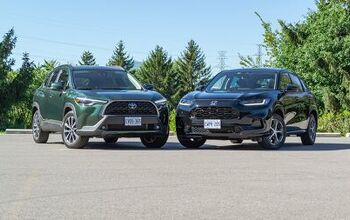
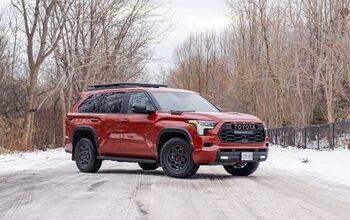

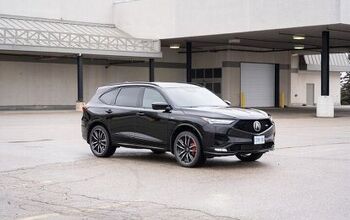
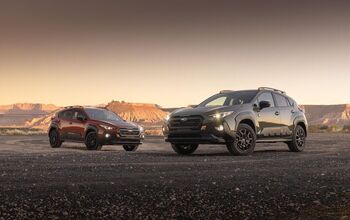
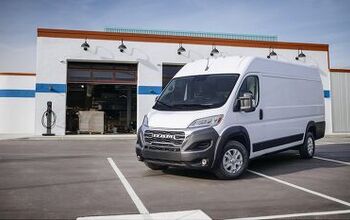
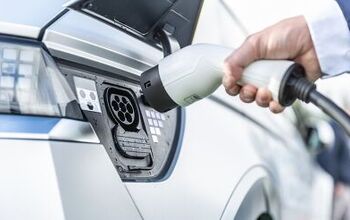


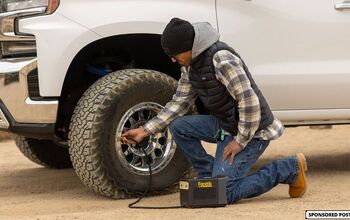



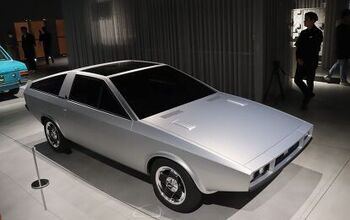
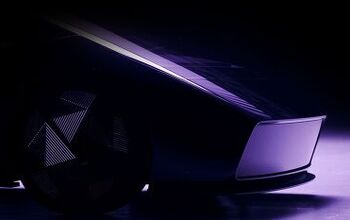
Comments
Join the conversation
Journos: Please provide better 'info' graphics/pics. I can't read these on my 13" laptop screen and enlarging them doesn't scale well. Thanks
did you ever metion the price of your top trim winning Seltos or top trm winning 2nd place hybrid?
I am sure those are well north of $33,000 us.
and those don't even include a $50 heated steering whell for those of us in the upper 38 who use ot 6 months of the year.
now i did find the $25,000 trax cabin a bit noisy but with all the daily usable features a driver can only find in their (not in the phone) it is really hard to beat the Trax or Trailblazer. Time will tell on if the reliability stands up (on any of these)
Of course, if flat out performance is the goal, then yes spend the money on Mazda with a Turbo and you will definitely win the Smile per $$ category every day.
One last note with 11 entries the class should be divided into 2 categories.